- Getting around Lijiang. Dont stay in the Old Towns more than 2 days, there is nothing to do. KRISS Oct 9, 2013 05:46
- 2013 Beijing Temple Fair BENNYLAU Feb 26, 2013 03:29
- Malaysian traveling from KUL - LAX vis Shanghai PVG ZATI_DY Jan 3, 2013 20:15
Suzhou: Heaven on Earth
- Views: 12982
- |Vote: 0 0
- |Add to Favorites
- |Recommend to Friends
上有天堂,下有苏杭
The Chinese have a famous saying: 上有天堂,下有苏杭. In the sky is Heaven’s paradise, on Earth is Suzhou and Hangzhou. In the Chinese conception Suzhou, and neighboring Hangzhou, are the closest things to Heaven on Earth.
This statement can largely be attributed to Suzhou’s multitude of gardens. Microcosms of nature distilled from the Daoist idea of harmony between heaven and earth, the gardens of Suzhou, which date back as far as 600 AD, are such an important contribution to the essence of that harmony that in 1997 UNESCO declared over 25 of them World Heritage Sites.
From the Humble Administrator’s Garden to the Lion Forest; the Garden of the Master of the Nets to the Garden of Pleasure, each of Suzhou’s scores of city-gardens, tucked neatly and unsuspectingly behind modest (but concealing) city walls, rival even the most brilliant of Babylonian horticultural achievements.
A Little Snack
But before experiencing nature-writ-small, a sampling of Suzhou’s culinary traditions on the tongue appropriately flavors an excursion to one of its gardens. The gardens are meant to be experienced mind, soul and body—of which the stomach is an integral part.
“So, what are we going to eat?” I asked my friend who was strolling beside me in the shadowy sunset light. My stomach had commanded me to ask the question. My tongue was still tinged with the earthy sweetness of the green tea we had sipped in the Storyteller Tea-house, a flavor that had opened my appetite. My eyes started darting into shop stalls and restaurants, looking for something especially Suzhouian to cap off our day’s adventures in the canal-entwined Water Town of the south.
We were trawling Guan Qian Street, Suzhou’s famous pedestrianized shopping mecca. Located in the city center, Guan Qian Street is one of the best places to sample traditional Suzhou fare. Though many restaurants within Suzhou are hauter, Guan Qian hosts simple, straightforward, not-to-be-missed traditional Xiao Chi (小吃). Xiao Chi means “small eats” or “snack” and typically denotes some kind of traditional or local food item that can be wrapped up and taken away. Anytime I’m traveling I always look for those two promising little characters…it’s usually a good bet I’ll find some delicious local snack waiting for me.
We came upon a large corner building with lattice windows and a bright yellow sign: “好人小吃”—Good Man Small Eats. Perfect.
Gettin' Traditional
Good Man Small Eats is a popularly bustling, cozy restaurant in the midst of Guan Qian’s commercial pastiche. The casual eatery is actually closer to a Chinese version of a Spanish Tapas restaurant because two people can order six or seven menu items and what arrives is a mini-portion, or sampling, of some of Suzhou’s most famous culinary combinations.
We snagged a table from a couple who were just leaving and opened the menu. The waitress came by and dropped off a pencil and paper. Not knowing if she would return, we watched the tables around us and found that customers were writing down their own orders and then slipping them quickly into the palms of the speedy waitresses as they streaked from one end of the restaurant to the other. Thus, ordering in the Good Man Small Eats restaurant takes either a working knowledge of menu characters and the ability to write them (or at least passably copy them down), or crafty solicitation of one of the Mach-5 Waitresses as they careen by your table. Another solution is to select one of the pre-set meals on the menu, a selection of 6 or 7 menu items for a flat price, and just sit back and wait for the pre-selected dishes to arrive.
My friend and I settled on Set Menu A along with a few other dishes, making sure to cover the bases for sampling all the traditional fare. Our table rapidly filled up with items like Suzhou farm-dried sausage; cold noodles with spiced bread crumbs and peanut sauce; pork chops with bamboo shoots in a dark ginger-oyster sauce; steamed “mountain” corn cakes; phoenix foot tofu; and, last but not least, pumpkin and green bean cream soup.
The Tapas of the East
The Phoenix Foot tofu is probably the most traditional item that arrived. Phoenix Foot is the name for a style of boiling food, called Lu (卤), in a special sauce made from soy, ginger, vinegar and brown sugar. Usually, Suzhouians use the Lu method to cook chicken, but vegetarian options, as in the tofu we tried, are also common.
The farm-dried sausage is also commonly found in the Water Town region. Any trip to a local market or the courtyard of a family home (or even in the Temple of Mystery courtyard!) and you’ll find hand-made ropes of garnet-colored sausage drying from the rafters.
The mountain corn cakes, though not particular to the region, had a special taste that I haven’t found anywhere except Suzhou. Milky and mildly sweet, these soft cone-shaped little corn-cakes set off the nutty richness of the cold noodles that arrived soon after.
My favorite though was the deceptively simple pumpkin and green bean soup. Thick and hearty, pureed to the color of an autumn field, the naturally mild ruddiness of the pumpkin balanced the earthier, subtle flavors of the green beans. With a hint of cream and butter to meld the flavors, it was astonishingly satisfying.
One at a Time
The next morning, feeling appropriately primed after the evening’s feast, we set out to explore some of Suzhou’s gardens. Of the 77 gardens within Suzhou, it’s difficult to even attempt to see half of them on any visit. Akin to hiking in the Rockies of North America, it’s tempting to try and ‘bag’ gardens as some like to try and ‘bag’ peaks, just to prove…well…something. In the case of Suzhou, you might be considering the fast-track to enlightenment, but you’d be misguided if you tried.
Why? Simply because there’s no rushing a good mix of scenery and serenity, and the artists who were hired in the height of the Tang and Song dynasties to design the gardens would twitch their Mandarin-moustaches at you and fold their arms into their long sleeves if you suggested such a thing.
Seeing Things in Rock
The artistry of Suzhou’s gardens uses only four basic elements: trees, water, bridges, and rock. Made to imitate mountains, rocks are selected and pieced together intentionally for design purposes to create an overall effect. The majority of stones in the rock gardens of Suzhou are taken from nearby Lake Tai, and the best ones harvested are called ‘rock peaks,’ which are judged on three qualities: they must be slender and not bulky, they must have horizontal and vertical tunnels, and their surface must be wrinkled and not smooth. The Picasso-esque sculptures of rock in the Lion Forest garden leave a more-than lasting impression; an unexpected Rorshach of possibilities at every viewing and every turn.
The Garden's Soul
In a city wobbling on a silty tableau of water, you’d think incorporating a water element into gardens would only require drilling a few meters and then see what fills in. Well, that’s true, but builders at the time of the Tang and Song dynasties also knew how to drill, create trenches so that water flows through, and then reconnect to the river to create ‘sinuous currents’—imitating nature in the pathways of the earth’s water. Masters excelled at creating truly harmonious water flows, not just within the garden, but within the water system of the city. It was a coveted skill—as it should be. Water is considered the garden’s soul.
The Tree's the Thing
Where there’s water, there’s a bridge. The placement, alignment, and design of bridges as they fit into the landscape are not just functional but aesthetic and spiritual. And finally, the garden would be just water and stone without trees and plants. Trees are the most prized and kaleidoscopic elements of the garden, the older the better, because a garden can be made around a tree but an old tree can’t be moved to make a garden. The type is also important, for each tree type has a different meaning to Chinese culture, as the Chinese often identify their personality types with tree types. Species range from Gingko to Lotus; Wisteria to Cypress, Forsythia, Plum, Peach, Ash, Willow, and Pine. In the same way that humans show different sides of beauty at different ages, trees in a garden are selected for their cyclic potential through the course of seasons. While one corner may boast budding early spring flowers, another may be just as beautiful for the bare elbows of its trees reaching out over black water. The expansive embrace of a centuries-old cypress or gingko may be the centerpiece of an entire garden: light, weather, and season providing continual set-changes in the tree’s pageant of perfection.
The Slow Path to Discovery
Because Suzhou’s gardens are usually hidden behind narrow alleys and high walls, you may never even know that a garden lies just behind you or next to you as you walk along city streets. This is done intentionally. As different from the sprawling city parks of the West, Chinese gardens are designed to be taken in slowly and with as much anticipation as possible. Arriving in a garden deposits you not before nature in all its splendor but before a long zigzagging gallery. But soon beyond the “winding path to serene beauty”, famous Chinese writer and native Suzhouian Lu Wenfu promises “a patch of garden behind a wall will wink at you through the latticework of a sculpted window.”
As in Daoist thought (with some highlights of Buddhism) beauties of life cannot be had all at once, they must come step by step; each footfall reveals some new opportunity, some new angle of repose. The scene shifts at every turn. “Each plot of land has been designed to resemble a splendid painting. A dead angle here would be like a failed brushstroke”.
A Simple Formula
The fabled fusion of nature, architecture, and poetry within Suzhou’s gardens means that every single garden is unique in its design, buildings, artistry, patterns and features. Whether you want them to or not, they inspire a meditative mood from the interplay of elements surrounding you. They are fractal microcosms, impossibly achieving a simultaneous yet contradictory depth and simplicity that only the purest combination of natural elements and man’s artistic mind could conjure.
The city: bustle, noise, smog, industry, squabbles, worries. Disappears.
And each garden, though every one is comprised of the same basic elements, is entirely different from the next. Even the same garden on different days or in different seasons is never seen or experienced in the same way.
It is that basic formula, that simple truth, that makes Suzhou’s gardens so remarkable. Like music or language, finite elements composed together create some of man’s most stunning, and infinite, equations.
And the result—no matter what the weather or the season—is beautiful.
A little Heaven on Earth.
Information
On this trip to Suzhou we visited the Lion Forest Garden (ShiziLin) and the Garden of Pleasure (Yi Yuan). Both are a good choice in the winter months because they are known more for their design, layout, buildings and rockeries than their plant life--which was still plentiful in Suzhou but not in full splendor as it would be in the Spring and Summer.
Entrance Fees:
Shizi Lin: 20RMB
Yi Yuan: 15 RMB
You will pay upward of 50RMB to get into some of the more popular gardens, like the Humble Administrator's Garden or the Garden of the Master of the Nets. Expect expensive, but know that it's worth it. It's always worth it.
For information about transportation and where to stay, see the travel review "Suzhou: The Little Italy of China"
Material quoted from Lu Wenfu's "The Soul of Suzhou's Gardens"



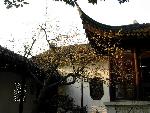


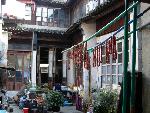
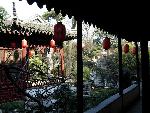
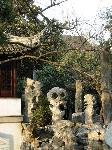
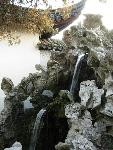
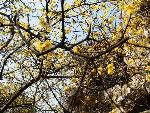


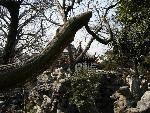
 Copyright © 1998-2026 All rights reserved.
Copyright © 1998-2026 All rights reserved.
1.
Nov 13, 2007 23:32 Reply
LEMONCACTUS said:
I'm off to Suzhou soon and checked out your articles for some ideas. Great inspiration, thanks.
2.
Mar 6, 2007 22:19 Reply
STOCKTOV said:
Thanks for the comment. That restaurant also had Sichuan food, but the items we ordered were traditional Suzhou food---so they've got that as well.
3.
Mar 6, 2007 00:19 Reply
TOMORROWNEVERDIE said:
“好人小吃”—Good Man Small Eats is mostly Sichuan food :-)